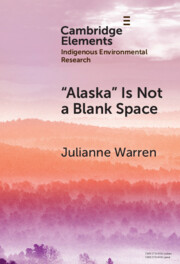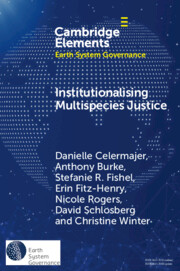Refine search
Actions for selected content:
124 results

Performing Urban Ecologies
-
- Published online:
- 17 November 2025
- Print publication:
- 11 December 2025
-
- Element
-
- You have access
- HTML
- Export citation
20 - Technological Acceleration and the Precarisation of Work
- from Introduction to Part IV
-
-
- Book:
- Human Rights in the Digital Domain
- Published online:
- 24 October 2025
- Print publication:
- 13 November 2025, pp 424-438
-
- Chapter
-
- You have access
- Open access
- HTML
- Export citation
8 - Not a Drop to Drink
-
- Book:
- Regulating a Thousand Cuts
- Published online:
- 27 September 2025
- Print publication:
- 09 October 2025, pp 205-237
-
- Chapter
-
- You have access
- Open access
- HTML
- Export citation
4 - Conceptualization
-
- Book:
- Regulating a Thousand Cuts
- Published online:
- 27 September 2025
- Print publication:
- 09 October 2025, pp 74-101
-
- Chapter
-
- You have access
- Open access
- HTML
- Export citation
3 - Structural Inequality and the Evolving Movements for Land-Use Justice
-
-
- Book:
- Racial Justice in American Land Use
- Published online:
- 19 September 2025
- Print publication:
- 09 October 2025, pp 69-98
-
- Chapter
- Export citation
Environmental Justice and Enforcement: Guidelines from Three Country Studies
-
- Journal:
- Transnational Environmental Law , First View
- Published online by Cambridge University Press:
- 07 October 2025, pp. 1-24
-
- Article
-
- You have access
- Open access
- HTML
- Export citation
3 - Local Environmental Protection in NYC
-
- Book:
- Local Greens
- Published online:
- 11 October 2025
- Print publication:
- 18 September 2025, pp 36-54
-
- Chapter
- Export citation
4 - Decarbonization Efforts in NYC
-
- Book:
- Local Greens
- Published online:
- 11 October 2025
- Print publication:
- 18 September 2025, pp 55-71
-
- Chapter
- Export citation
Mapping Out Juridified Conflicts over Mining: The Legal Cultures of the Subsoil Database
-
- Journal:
- Latin American Research Review ,
- Published online by Cambridge University Press:
- 15 September 2025, pp. 1-16
-
- Article
-
- You have access
- Open access
- HTML
- Export citation
9 - Environmental Justice, Circular Economies, and Green Living
-
-
- Book:
- The Circular Economy and Liveable Cities
- Published online:
- 05 September 2025
- Print publication:
- 04 September 2025, pp 135-145
-
- Chapter
- Export citation

‘Alaska’ is Not a Blank Space
- Unsettling Aldo Leopold's Odyssey
-
- Published online:
- 28 August 2025
- Print publication:
- 25 September 2025
-
- Element
- Export citation
3 - Climate Change Worldviews and the Scale of Environmental Justice
- from Part I - Movement Politics
-
-
- Book:
- Stability and Politicization in Climate Governance
- Published online:
- 07 August 2025
- Print publication:
- 21 August 2025, pp 35-48
-
- Chapter
-
- You have access
- Open access
- HTML
- Export citation
Renter willingness to pay for urban green space
-
- Journal:
- Agricultural and Resource Economics Review , First View
- Published online by Cambridge University Press:
- 20 August 2025, pp. 1-20
-
- Article
-
- You have access
- Open access
- HTML
- Export citation
Co-opting the state: mobilizing environmental justice claims in a regulatory agency
-
- Journal:
- Law & Society Review / Volume 59 / Issue 1 / March 2025
- Published online by Cambridge University Press:
- 28 March 2025, pp. 82-105
- Print publication:
- March 2025
-
- Article
-
- You have access
- Open access
- HTML
- Export citation

Institutionalising Multispecies Justice
-
- Published online:
- 29 January 2025
- Print publication:
- 27 February 2025
-
- Element
-
- You have access
- Open access
- HTML
- Export citation
Decrecimiento y agroecología: La experiencia del Movimiento de Trabajadores Rurales Sin Tierra (MST) en campamentos y asentamientos rurales en el Gran São Paulo, Brasil
-
- Journal:
- Latin American Research Review / Volume 60 / Issue 2 / June 2025
- Published online by Cambridge University Press:
- 16 December 2024, pp. 388-409
-
- Article
-
- You have access
- Open access
- HTML
- Export citation
Indigenous Advocacy and the Compliance Mechanisms of the World Heritage Convention: a TWAIL Reading
-
- Journal:
- International Journal of Cultural Property / Volume 32 / Issue 1 / February 2025
- Published online by Cambridge University Press:
- 04 December 2024, pp. 58-75
-
- Article
-
- You have access
- Open access
- HTML
- Export citation
8 - Clare and Ecocriticism
- from Part II - Clare the Naturalist
-
-
- Book:
- The Cambridge Companion to John Clare
- Published online:
- 14 November 2024
- Print publication:
- 21 November 2024, pp 120-134
-
- Chapter
- Export citation
Is air pollution increasing in poorer localities of Mexico? Evidence from PM 2.5 satellite data
-
- Journal:
- Environment and Development Economics / Volume 30 / Issue 1 / February 2025
- Published online by Cambridge University Press:
- 16 October 2024, pp. 52-69
-
- Article
-
- You have access
- Open access
- HTML
- Export citation
From Cadarese to Morasco: the creation of a Fascist hydroscape in alpine space after 1928
-
- Journal:
- Modern Italy / Volume 30 / Issue 1 / February 2025
- Published online by Cambridge University Press:
- 19 September 2024, pp. 39-55
- Print publication:
- February 2025
-
- Article
-
- You have access
- Open access
- HTML
- Export citation
